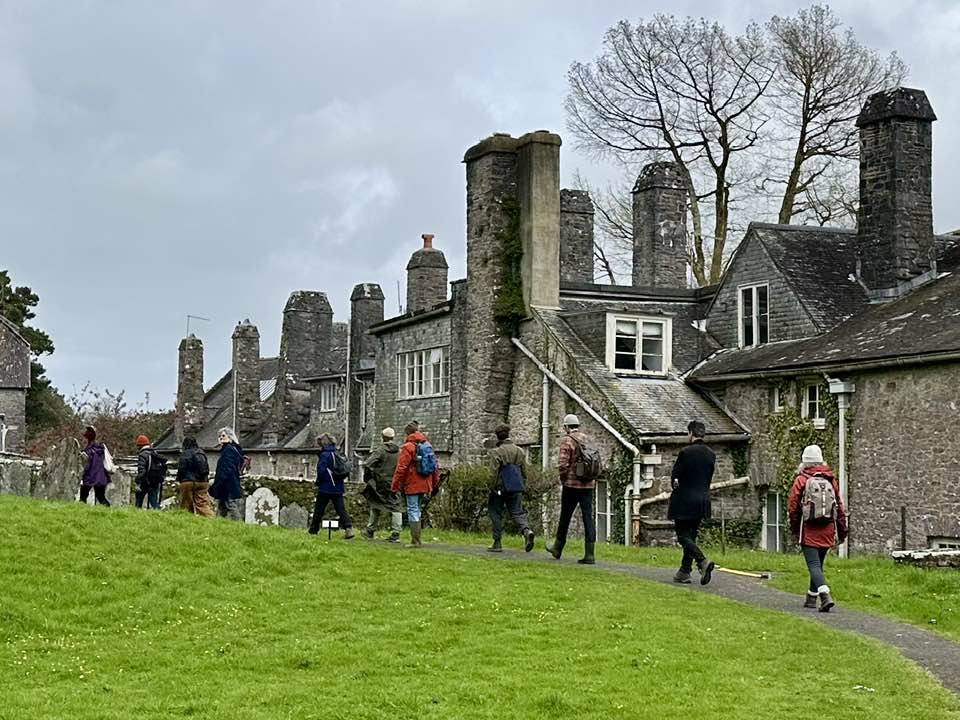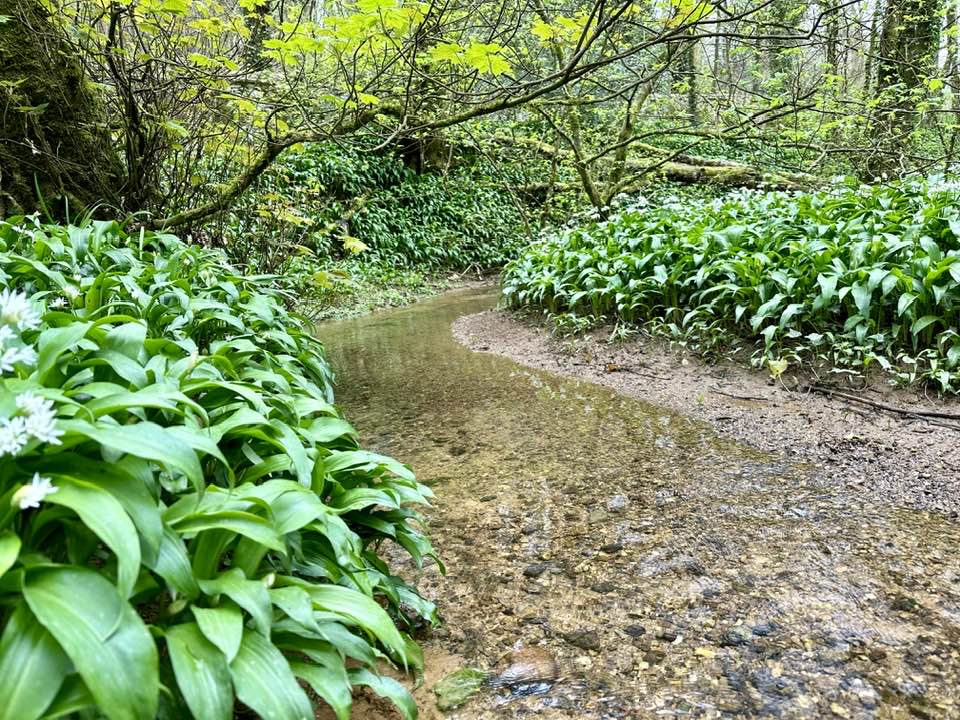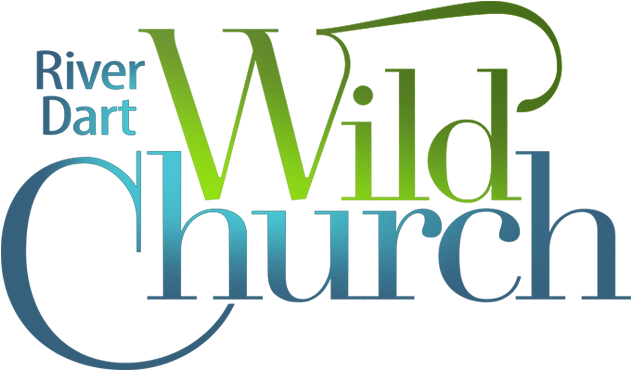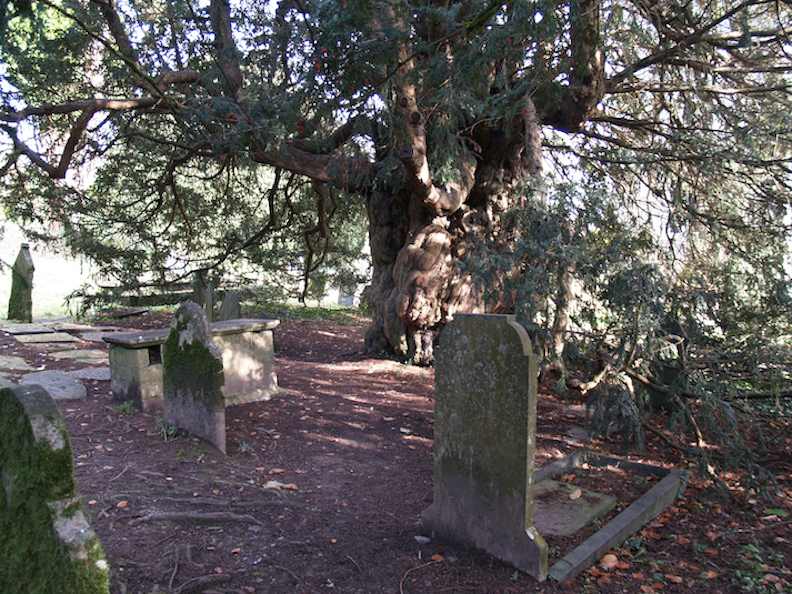For our first pilgrimage of 2024, on the first Sunday of April, we were blessed to be guided by Hebrew Kohenet-Priestess Sara Moon, as part of our current series of interfaith peace pilgrimages. We walked the next stage of our River Dart Way, as we wandered and wondered between the ancient yews of Dartington and Staverton. Sara is co-founder of Miknaf Ha’aretz and I highly recommend exploring the inspiring work she and her colleague Samson are offering, to build earth based community and enable land justice. Click here for more images & reflections on our afternoon.
In our Wild Monastery, we often talk about and contemplate ‘wild scripture’ – that way in which the natural world, which we are part of, can become for us a wisdom text, to be read with care and reverence. So it was wonderful to receive Sara’s perspective on this from her deep rootedness in both her Jewish faith and her relationship with the River Dart. As Sara reminded us at the beginning of our time together:
“The Torah was given through three things: fire, water and wilderness”. Bamidbar Rabbah
So we gathered under and with the ancient yew in the oldest churchyard at the heart of the Dartington Estate and came together through chant, which was such a beautiful way to connect with each other, the land and waters, and to centre within:
מִמַּעַיְנֵ֖י הַיְשׁוּעָֽה
שְׁאַבְתֶּם מַ֖יִם בְּשָׂשׂ֑וֹן
Mimainei hayeshua
Shavtem mayim b’sason
We will draw water in celebration
From the wellsprings of liberation
Mayim hayim (Living Waters)Words adapted from Isaiah 12:3, Song by Avra Shapiro

Soon we were on the move and making our way, past the deer, the trees just awakening to spring and the flowering wild garlic, to reach the river. Here we paused to meet, engage with and touch the water, both within and without:
“We are made of water: Salty rivers run in our veins, lymph ebbs and swells, saliva and tears leak into the air and dry. We are always changing: wide seas into clouds, rain into puddles, rivers into muddy fields that run along ditches into the sea. We flow, freeze, boil, rise, disperse, are hurled this way and that. We declare that we are the blue edge of glaciers, the great ocean swell, stagnant teeming ponds, months long tropical downpours, the delicate tracery of frost on a dry leaf, rusty drip of a faucet. We are the shape of what’s happened to us. We are caught up in doing, and whirl through our lives, suffering, joyful, filled with doubt. And yet we return to ourselves again and again, to the Self that is all there is. We are made of water, called to find our true level by that great force of love we call gravity. We are made to trust our destination. We are not lost.” -Aurora Levins Morales

Continuing on the muddy path which runs through the redwoods, we then crossed the river at Staverton bridge and walked beside the steam railway (waving at other travellers as they chuffed past!) before pausing again beside the water. Here Sara invited into the Torah tale of:
Miriam by the Riverbank
The daughter of Pharaoh came down to bathe in the Nile, while her maidens walked along the river. She spied the basket among the reeds and sent her slave girl to fetch it.When she opened it, she saw that it was a child, a boy crying. She took pity on it and said, “This must be a Hebrew child.”
Then his sister said to Pharaoh’s daughter, “Shall I go and get you a Hebrew nurse to suckle the child for you?” And Pharaoh’s daughter answered, “Yes.” So the girl went and called the child’s mother.
And as a child Miriam would say: In the future, my mother will give birth to a son who will save the Jewish people. And once Moses was born, the entire house was filled with light. Her father arose and kissed her on her head. He said to her: My daughter, your prophecy has been fulfilled. And once they put him into the river, her father arose and hit her on her head. He said to her: My daughter, where is your prophecy?
And this is as it is written: “And his sister stood afar off, to know what would be done to him”(Exodus 2:4), i.e., to know what will be the ultimate resolution of her prophecy. (Exodus & Babylonian Talmud Sotah 12b)
The context of this story is a time of oppression and suffering in the history of the Hebrew people. Living as slaves in Egypt, their firstborn have been condemned to die. Yet the prophetess Miriam has been able to glimpse, even from childhood, a miraculous hope of future freedom. Even though her family first praise and then condemn her for her prophetic words, she remains steadfast and true to the vision received and acts courageously to enable its realisation. Sara encouraged us to sit beside the river like Miriam and open to inspiration and support, during our very troubled times, when land, waters and many of those that dwell with them are oppressed and in conflict. I personally found this a very moving and encouraging part of our pilgrimage.
The final part of our silent walk then took us into Staverton churchyard and into the presence of another ancient yew tree. Here we shared more en-chant-ment, water from Miriam’s Cup and then reflections from our journey. Then we closed with a blessing, which brought our Wild Torah pilgrimage to a beautiful conclusion. With deep thanks to Sara, all pilgrims and the church/synagogue of the wild.
Zot Kos Miryam, kos mayim hayim.
Zeikher l’yitziat Mitztrayim.
This is the Cup of Miriam, the cup of living waters.
Blessed are You, Source of Life, who blesses us with the capacity to imagine beyond the narrow places, emboldens us to resist and speak truth, and guides us to dance our way, together, towards an emancipated future. (English blessing by Kohenet Dori Midnight)

